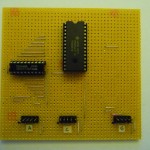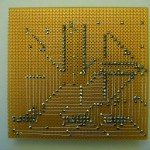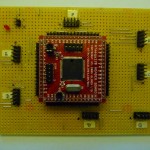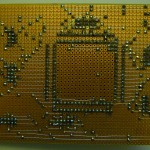After watching the rant from Dave Jones (from the EEVblog) in his car expressing his opinion on DIY micro controller-based oscilloscopes one might think there is no merit to building such a device. Well, in my opinion there is! Okay, Dave also made this point clear: it is okay to build one for getting your feet wet in the electronics and embedded systems domain. Which is exactly what I am doing.
To further address the criticism of Dave by saying that those DIY scopes usually do not have any thought put into the analog front-end (AFE) or the trigger section. In general I’d approve his observations.
So why is the lzoDSO not going to be a simple DIY scope? Because we actually want to delve down into the dirty details of constructing an AFE and a trigger section that act just like the ones an electrical engineer would expect from a typical digital storage oscilloscope.
Even though these are two of the paramount parts of an oscilloscope, first we will bring our prototype to a state where it can be helpful in evaluation the design of an AFE and a trigger section.
UPDATE: As Dave suggested I started asking around for someone who might pass me his old oscilloscope. If you have one you want to pass on to someone who will gain from even an old analog or digital device: please contact me (see contact) and maybe I can compensate you in one way or the other. Anyways, don’t think this will stop me from continuing to work on the lzoDSO.






